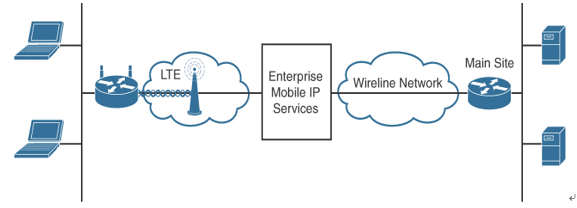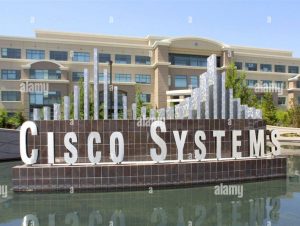Dense Wavelength-Division Multiplexing – WAN for the Enterprise
3 min read
Dense wavelength-division multiplexing (DWDM) increases the bandwidth capabilities of fiber by using different wavelengths of light called channels over the same fiber strand. Each fiber channel is equivalent to several 10 Gigabit Ethernet links. It maximizes the use of the installed base of fiber used by service providers and is a critical component of optical networks. DWDM enables service providers to increase the services offered to customers by adding new bandwidth to existing channels on the same fiber. DWDM lets a variety of devices access the network, including IP routers, Ethernet switches, and SONET terminals.
Figure 8-5 illustrates the use of DWDM using Cisco Nexus and Cisco ONS devices with a SONET/SDH ring.

Figure 8-5 DWDM
Dark Fiber
Dark fiber is fiber-optic cable that has been installed in the ground and where right-of-way issues are evident. To maintain signal integrity and jitter control over long distances, signal regenerators are used in some implementations. The framing for dark fiber is determined by the enterprise, not the provider. The edge devices can use the fiber just like within the enterprise, which allows for greater control of the services provided by the link. Dark fiber is owned by service providers in most cases and can be purchased similarly to leased-lined circuits for use in both MANs and WANs. The reliability of these types of links needs to be designed by the enterprise and is not provided by the service provider. High availability using dark fiber needs to be designed with multiple links; this differs from SONET/SDH technology, which has redundancy built into the architecture.
Wireless: 4G/5G
Wireless technology uses electromagnetic waves to carry signals between endpoints. Everyday examples of wireless technology include cell phones, wireless LANs, cordless computer equipment, and the Global Positioning Systems (GPS).
Here are some examples of wireless implementations:
- Mobile wireless: Mobile wireless consists of cellular applications and mobile phones. Most wireless technologies, such as the third and fourth generations, are migrating to faster digital services to take advantage of the higher speeds with 5G. 3GPP is a standards body that provides standards for mobile telephony, including 3G/4G/5G cellular standards. Mobile wireless technologies include GSM, GPRS, and UMTS:
- Global System for Mobile Communications (GSM): GSM is a digital mobile radio standard that uses Time Division Multiple Access (TDMA) technology in three bands (900, 1800, and 1900 MHz). The data transfer rate is 9600 bps, and GSM enables international roaming.
- General Packet Radio Service (GPRS): GPRS extends the capability of GSM speeds from 64 kbps to 128 kbps.
- Universal Mobile Telecommunications Service (UMTS): UMTS, also known as 3G broadband, provides packet-based transmission of digitized voice, video, and data at rates up to 2.0 Mbps. UMTS also provides a set of services available to mobile users, location-independent throughout the world.
- Long Term Evolution (LTE): LTE, also known as 4G LTE, is based on GSM and UMTS network technologies but increases the capacity and speed using a different radio along with network improvements. Download peak rates are up to 300 Mbps, and upload peak rates are up to 50 Mbps.
- LTE Advanced: LTE Advanced is the next step for 4G LTE based on Release 10/11 Category 6–12 standards from the 3GPP standards organization. Improvements such as carrier aggregation allow for carriers to transmit data to a wireless router over multiple network bands simultaneously through a single aggregated data pipe. Download peak rates are up to 600 Mbps, and upload peak rates are up to 100 Mbps.
- LTE Advance Pro: LTE Advance Pro/Gigabit LTE is the next standard on the path to 5G based on Release 12/13 Category 13–20 standards from the 3GPP standards organization. Estimated download peak rates of 1.1 Gbps are possible, and upload peak rates of 200 Mbps are possible.
- 5G: 5G is an emerging wireless standard based on Release 15 Category NR from the 3GPP standards organization. It offers improvements such as carrier aggregation, sub-6 GHz, and power enhancements. Download peak rates are up to 20 Gbps, and upload peak rates are up to 10 Gbps.
Figure 8-6 shows examples of LTE Advanced as a primary WAN link.

Figure 8-6 LTE Primary WAN Link
Figure 8-7 shows examples of LTE Advanced as a backup WAN link.

Figure 8-7 LTE Backup WAN Link




